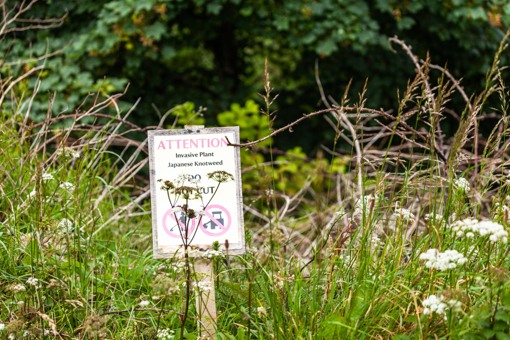‘Fallopia Japonica‘ – more commonly known as Japanese knotweed – is the most common form of knotweed found in the UK. It is highly invasive and grows aggressively from year-to-year – during the summer months it is known to produce stems up to 3m tall (10ft).
But it is the roots that cause the biggest problem, as the plant develops an extensive network of underground stems (rhizomes), which can break through hard surfaces such as concrete and tarmac, spelling disaster for any buildings in close proximity – particularly when it comes to selling.
This guide will help you to identify Japanese knotweed and discuss which options are available to you if you find it on your property. Navigate the post using the table of contents below.
Table of Contents:
- Identifying Japanese knotweed: The characteristics
- Can I sell my house with Japanese knotweed?
- Where is Japanese knotweed found in the UK?
- How to remove Japanese knotweed from your property?
- How much does it cost to remove Japanese knotweed?
Identifying Japanese knotweed: The characteristics
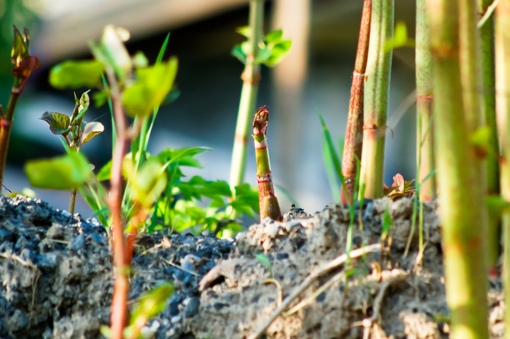
Photo credit: Erika J Mitchell / Shutterstock
You should look out for the following:
- Red tinged shoots (when the plant first breaks through the ground)
- A hollow stem (bamboo-like)
- One stem per node
- Zig-zag stem growth
- Shield/shovel/heart shaped leaves with a flat base
- Mid-green coloured leaves
- Clusters of cream flowers (most common towards the end of July)
- Normally dies back between September and November, resulting in brown stems
Despite these characteristics, it is very easy to misdiagnose Japanese knotweed. Watch this video to see the different ways of identifying Japanese knotweed:
Can I sell my house with Japanese knotweed?
Before you go ahead and begin selling a house with Japanese knotweed, you must take into account the problems that you may face. If a professional has confirmed that your property has Japanese knotweed, then your options for sale will depend on its severity and its proximity to your home – the same goes for if there is a confirmed sighting on a property nearby too.
Unfortunately, mortgage lenders are often very reluctant to lend on properties where knotweed is growing, as the plant’s roots can affect the structural foundations of the property. This is a major problem when getting building insurance or a mortgage, as if anything happened to the property, companies are often unwilling to pay out any money. This can instantly put off any potential buyers.
However, this isn’t always the case. In some instances, if a mortgage lender sees evidence of a treatment plan, they may grant you a mortgage. But, some mortgage lenders will not lend any money until the plant is removed from the property. Therefore, it is advisable to contact a Japanese knotweed removal company and begin treatment immediately. However, it is worth noting that Japanese knotweed removal is not a quick job – the process can takes around three years from start-to-finish.
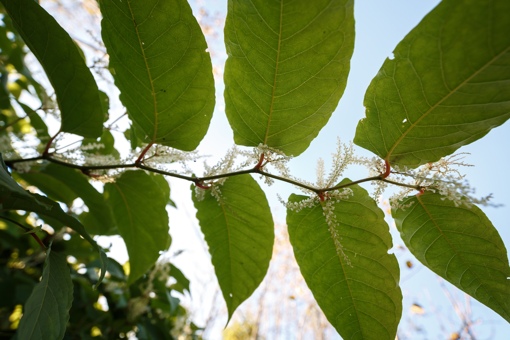 Photo credit: Vasilii Aleksandrov / Shutterstock
Photo credit: Vasilii Aleksandrov / Shutterstock
So, if you are in a rush to move out with no time to treat your property properly, your options will be limited. Instead, you may want to consider selling your home to a cash buyer who can deal with the problem themselves, without having to borrow money from a mortgage lender. If you choose to go down this route, it’s worth noting that this can result in your property selling for much less than the asking price – sometimes even as much as 20%.
Alternatively, you may want to consider selling your home to a “we buy any house” company, who buys all different kinds of properties (no matter what their condition is), in exchange for cash. Feel free to get in touch with the team at Fast Sale Homes if you would like any further information.
Where is Japanese knotweed found in the UK?
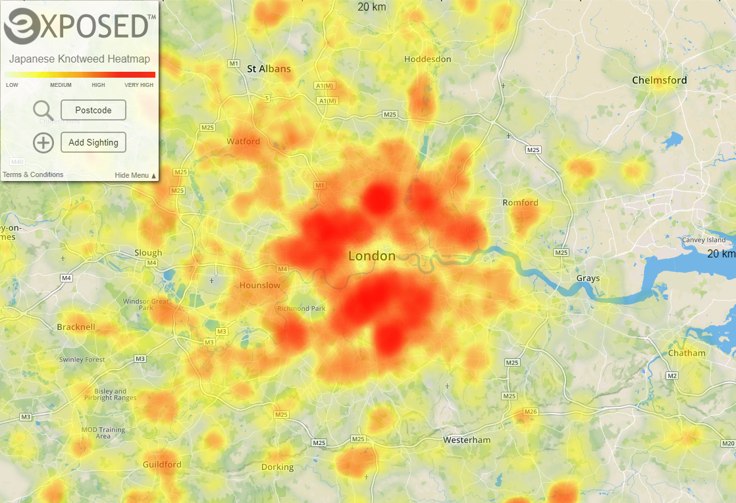
If you’re looking to move, it is worth checking to find out whether Japanese knotweed has been identified within a 5-mile radius of the area you are searching in. If there is, it is advisable to avoid the area altogether to ensure your new home will not be affected by this highly intrusive (and expensive) plant.
Environet have a great tool to see where Japanese knotweed has been identified around the UK (see picture).
How to remove Japanese knotweed from your property?
You may be wondering how to kill Japanese knotweed. Unfortuantely, according to Swansea University – who conducted the world’s largest field trial on the control of Japanese knotweed – eradication of the plant is not possible in the short term. However, this doesn’t mean the plant isn’t treatable. There are two common ways of removing Japanese knotweed from your property:
1. Herbicide treatment
This treatment is good for:
- Homeowners
- Buyers
- Sellers
2. Excavation
This is recommended where long-term herbicide treatment isn’t desirable, or the area that is affected is to be disturbed frequently. It includes:
- Turfing
- Driveway
- Paving
- House extension
- Outbuilding (garden shed, garage, greenhouse etc.)
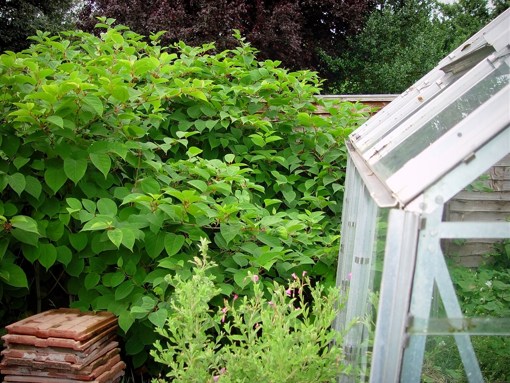 Photo credit: John Lumb / Shutterstock
Photo credit: John Lumb / Shutterstock
On the other hand, you may be looking at alternative DIY treatments to get rid of Japanese knotweed yourself, to cut back on specialist costs. But before going ahead, beware that doing this could make the situation 10-times worse. As a result, it is recommended that you consult a trusted Japanese knotweed removal company to do the hard work for you.
AVOID the use of garden trimmers – freshly-cut Japanese knotweed stems are able to grow even more shoots when in soil or water.
Some professional removal experts and national bodies include:
- Environet UK
- Japanese Knotweed Solutions
- Invasive Non-Native Specialists Association
- Property Care Association
How much does it cost to remove Japanese knotweed?
The cost of removing Japanese knotweed is entirely dependent on how much square footage the plant covers, and which company you use. According to Japanese Knotweed Ltd, the going-rate is around £1,000 per visible square yard.
Not to mention, whichever treatment process you wish to go with also plays a part in the cost too. Digging the plant out of the ground is more expensive than the more common herbicide treatment, as it requires more manual labour – particularly if your property requires work to make the garden easily accessible before the treatment begins.
Feature image credit: riccar / Shutterstock

